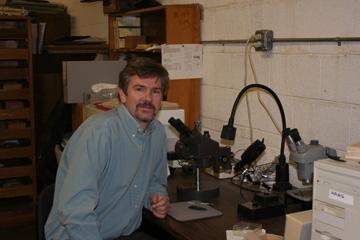My research focuses on the transition of hunting and gathering populations to the earliest horticultural societies. This transition involved a complex cultural dynamic that had significant economic, social, and technological implications in prehistory. Using perspectives from nonlinear dynamics and institutional economics, I am interested in building dynamical models of forager interaction and property rights institutions that emphasize hunter-gatherer autonomy, information acquisition, and individual action. The qualitative dynamics underlying hunter-gatherer economic systems presumably date to the initial radiation of modern humans. On a worldwide scale, however, similar individual-level forager behavior generated different collective responses in different environments and periodically involved structural elaboration, in which qualitatively new institutions emerged. Agriculture was one collective response that had profound effect on human society. When, where, and how this transition occurred is an enduring anthropological question.
My primary research area is west central Kentucky, particularly the Green River valley, where sites dating to both Archaic Period hunters and gatherers and Early Woodland horticultural groups are well known. Currently, I have two long-term field research projects. The first project involves archaeological remains found in the Mammoth Cave region. Mammoth Cave and other large, dry caves in the area contain many kinds of perishable remains and have one of the best-preserved archaeobotanical records from the Early Woodland Period in eastern North America. The second long-term field project involves investigation of the numerous Archaic shell midden sites located on the lower and middle Green River. Many of these sites were extensively excavated in the 1930s and 1940s and are curated in the Museum at UK. Working with both collections in the museum and new investigations at existing shell middens sites, my colleagues and I are reinvestigating several of the Green River sites to obtain modern archaeobotanical and faunal samples for comparative purposes. Both of these projects are multidisciplinary efforts that involve specialists in paleoethnobotany, zooarchaeology, geoarchaeology, and bioarchaeology.

